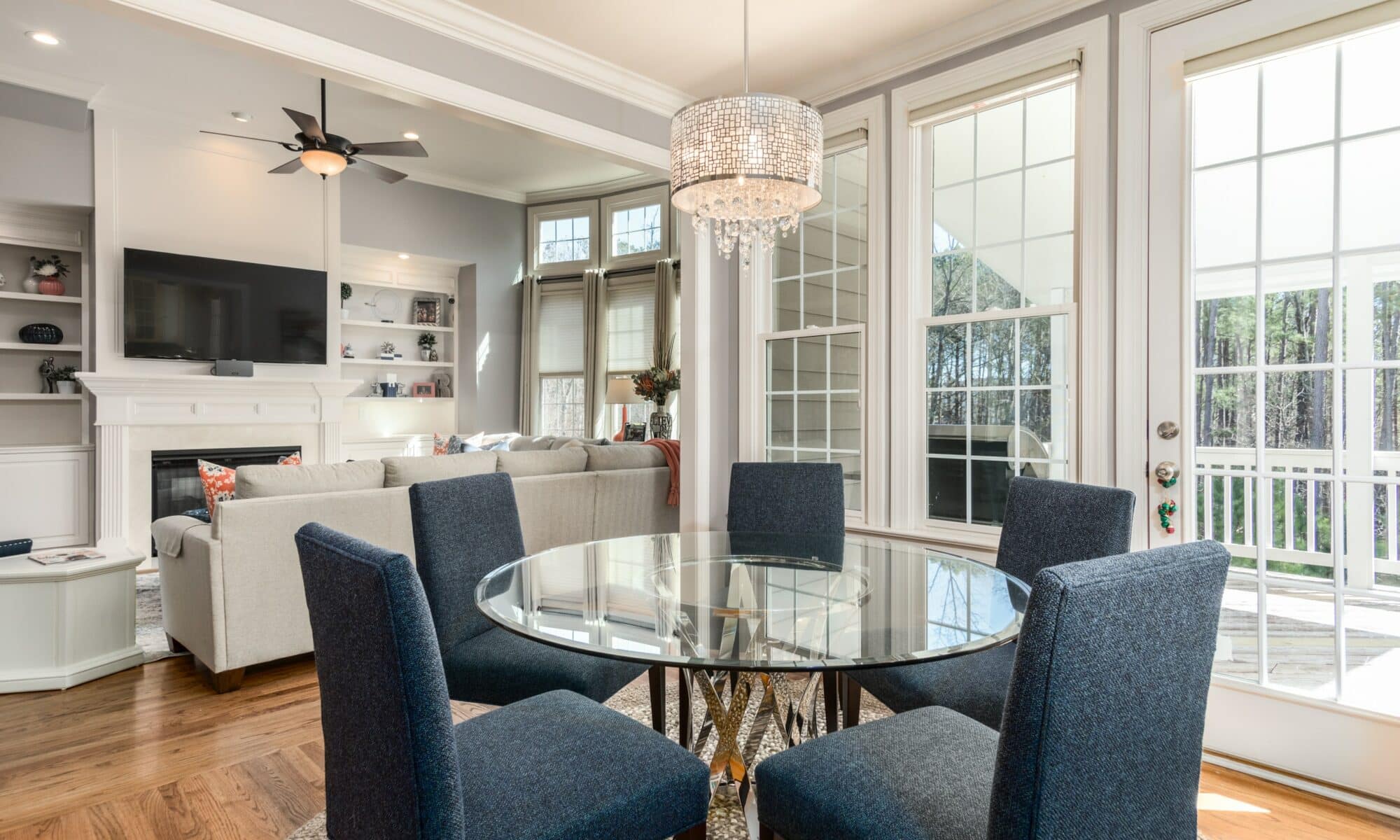Painting Your Home’s Wood Siding: An Introduction
Hey there, homeowner! Are you looking to give your home a fresh, vibrant look? Then you’re in the right place. This guide presents you with 7 tips for painting your home’s wood siding exterior. But first, let’s understand why exterior paint is so important and why wood siding requires special attention.
Understanding the Importance of Exterior Paint
The exterior paint of your home is more than just about aesthetics. It plays a crucial role in protecting your home against various elements. A good paint job can protect your wood siding from moisture, UV rays, and even insects. Plus, it can significantly enhance your home’s curb appeal and increase its market value. Don’t believe us? Check out our article detailing the top 7 benefits of painting your home’s exterior.
Why Wood Siding Requires Special Attention
Wood siding, though charming and timeless, requires a different approach when it comes to painting. Wood is a porous material, meaning it can absorb moisture, leading to rot and decay over time. This is why a proper paint job is essential for wood siding – it acts as a sealant, preventing moisture from penetrating the wood.
But there’s more to it. Wood siding also tends to expand and contract with changes in temperature and humidity. This can cause the paint to crack and peel, leading to a less-than-ideal appearance. Hence, choosing the right type of paint and applying it correctly is crucial for ensuring the longevity of your paint job on wood siding.
So, are you ready to start your painting project? Great! Keep reading for some expert tips and tricks to help you master the art of painting your home’s wood siding. And remember, if you ever feel overwhelmed, a professional house painter contractor is just a call away. They can provide you with the expertise needed to ensure your home looks its best.
Tip 1: Properly Preparing the Surface
Before you dive into painting your home’s wood siding, it’s crucial to ensure the surface is properly prepared. This is arguably one of the most critical steps in our ‘7 tips for painting your home’s wood siding exterior’. It will ensure a smooth application and a long-lasting finish.
Cleaning the Siding
First things first, you need to get that siding clean. Over time, dust, grime, and mildew can accumulate on your wood siding, and these can prevent your paint from sticking properly. So grab a power washer (or a good old-fashioned bucket and scrub brush) and wash down your siding thoroughly. Use a mild detergent or a specialized siding cleaner to really get rid of any stubborn dirt.
Once you’ve finished washing, give the siding a good rinse and let it dry completely. This may take a day or two, but it’s worth the wait. Painting over damp wood can lead to peeling, bubbling, and an overall uneven finish. Be patient, and make sure the wood is dry before proceeding to the next step. For more details on this, check out our article on 5 steps to prepare your home for exterior painting.
Sanding and Patching
Once the wood is dry, it’s time to sand. Sanding the surface will help to remove any old, flaking paint and create a smooth surface for your new paint to adhere to. Use a coarse-grit sandpaper for any rough areas and a finer grit for the rest of the siding. Remember to always sand in the direction of the wood grain to avoid scratching your siding.
After sanding, inspect the wood for any holes, cracks, or gouges. If you find any, it’s time to patch them. Use a high-quality wood filler to fill in these areas, smoothing it out with a putty knife to ensure a flat surface. Let the filler dry completely, then sand it smooth.
Properly preparing your wood siding may seem like a lot of work, but it’s a crucial step in ensuring a beautiful, durable paint job. It sets the stage for the rest of your painting project, so take your time and do it right. Remember, a little effort now can save you a lot of time and hassle down the line. To avoid common pitfalls, have a look at our guide on exterior painting mistakes every homeowner should avoid.
Tip 2: Choosing the Right Paint
The second step in the journey of painting your home’s wood siding exterior revolves around selecting the right paint. This is a crucial step as the type of paint you choose will determine the finish, durability, and overall look of your siding.
Selecting the Right Type of Paint
So, what’s the best type of paint for your home’s wood siding? It’s crucial to select paint that’s specially formulated for exterior use. Exterior paint is more durable and resistant to weather elements, which is important for the longevity of your project.
For wood siding, acrylic latex paint is often a top recommendation. This type of paint is water-based and known for its flexibility and resistance to cracking, which is critical for wood surfaces that expand and contract with temperature changes. It also holds up well against UV rays and moisture, offering a longer-lasting finish.
When selecting your paint, it’s also worth considering its sheen. Flat, eggshell, satin, semi-gloss, and gloss are common options. Typically, a satin or semi-gloss paint is recommended for exterior siding as they offer a nice balance between durability and visual appeal. For more on paint types and selections, a house painter contractor can offer professional advice.
Picking the Right Color
The color of your paint can dramatically impact the overall look of your home. When choosing a color, consider the style of your house, the landscape, and the general aesthetic of your neighborhood.
If you’re having trouble deciding, it can help to look at some color schemes online or drive around your local neighborhoods for inspiration. You might want to consider using a color that complements the natural wood of your siding to enhance its natural beauty.
Remember that darker colors tend to absorb more heat, which could lead to quicker fading and more frequent touch-ups. Lighter colors, on the other hand, do a better job at reflecting sunlight and can help keep your home cooler.
Color is a personal choice, so choose a hue that you’ll be happy with for years to come. For a deeper dive into selecting the perfect color, check out our guides on color choices for your interior painting project and 5 rules of painting a room with two colors.
The right paint can make all the difference in your project’s success, so take the time to choose wisely. With the right selection, you’ll be well on your way to a beautifully painted wood siding that you’ll be proud to show off.
Tip 3: Using the Right Tools
Speaking of brushing up on the art of painting your home’s wood siding, the tools you choose can make or break your project. From brushes to sprayers, and even the protective gear you wear, let’s explore what you need to have in your painting toolkit.
Brushes, Rollers and Sprayers
When painting wood siding, you’ll likely need a combination of brushes, rollers, and sprayers. Brushes are perfect for detailed work and hard-to-reach areas. They allow for precise control and are essential for painting areas like corners and trim.
Rollers, on the other hand, make painting large, flat areas a breeze. They can cover a lot of ground quickly, saving you time and energy. Just make sure to choose a roller with a nap that’s appropriate for your siding’s texture.
Sprayers can also be a great tool for painting siding if you’re comfortable using them. They can provide an even, smooth finish and can be particularly useful when painting large areas or multiple stories. However, they do require more preparation and cleanup, so keep that in mind!
Remember, the quality of your tools can significantly impact the final result. High-quality brushes, rollers, and sprayers can deliver a more professional-looking finish and make the painting process more efficient.
Protective Gear
Painting can get a bit messy, so it’s crucial to have the right protective gear. This includes items like gloves, safety glasses, and coveralls to protect your skin and clothes from paint splashes. And don’t forget about a hat or a bandana to keep paint out of your hair!
If you’re using a sprayer or working with oil-based paints, you should also consider wearing a respirator to protect your lungs from paint fumes.
Lastly, remember to protect your home too! Use drop cloths to cover your landscaping and any outdoor furniture or fixtures near your painting area. Painters tape can also be helpful to protect windows, doors, and trim from accidental paint splatters.
Choosing the right tools and protective gear is a key part of the process when painting your home’s wood siding. With these in hand, you’ll be ready to tackle your painting project like a pro! For more tips on preparing your home for painting, check out our article on 5 steps to prepare your home for exterior painting.
Tip 4: Applying Primer
The fourth tip in our guide for painting your home’s wood siding exterior is all about the primer. This step is crucial in ensuring your paint adheres well and lasts longer.
When to Use Primer
Primer isn’t always necessary, but it’s often a good idea when painting wood siding. If your siding is bare or if the existing paint is worn or peeling, you should apply a coat of primer before painting. This creates a smooth, even surface for the paint to adhere to and can help prevent knots and stains from showing through the paint.
Moreover, if you’re drastically changing the color of your siding—especially if you’re going from a dark color to a light one—a primer can help provide a neutral base that ensures the true color of your paint comes through. For more on choosing colors, check out our articles on color choices for your interior painting project and 5 rules of painting a room with two colors.
Proper Primer Application
Now that you know when to use primer, let’s talk about how to apply it properly. Start by stirring the primer well before use. Then, using a brush or roller, apply the primer evenly over the siding. Be sure to get into all the nooks and crannies, especially on textured or grooved siding.
Allow the primer to dry completely before proceeding with painting. This can take anywhere from a few hours to a full day, depending on the weather and the specific product you’re using. Once the primer is dry, give it a light sanding to ensure a super smooth finish. Then, you’re ready to paint!
Remember, patience is key when it comes to primer. Rushing this step could result in a less-than-ideal paint job. So take your time, do it right, and you’ll be well on your way to a beautifully painted home exterior.
For more tips on painting your home, including how often you should repaint and how to make your paint job last longer, check out our articles on how often do you need to paint the exterior of your house? and 7 tips for making exterior paint jobs last longer.
Tip 5: Painting Techniques
One of the most crucial parts of painting your home’s wood siding is the application technique. The way you apply your paint can have a significant impact on the final look and longevity of your paint job. Let’s dive into the correct methods.
The Correct Way to Paint Siding
When painting siding, always work from top to bottom. This method helps to prevent streaks and ensures that any drips are painted over as you work your way down.
For the best coverage, apply paint in thin, even strokes. This technique helps the paint to adhere better and dries more evenly, preventing unsightly cracks and peels.
Remember, it’s always better to apply multiple thin coats than one thick one. While it might be tempting to slap a lot of paint on at once to get things done quickly, this can lead to drips, streaks, and an uneven finish.
Handling Trim and Details
Trim and detailed areas like window and door frames can be tricky. These parts of your home’s exterior can make or break the overall look of your paint job, so they deserve special attention.
When painting these areas, use a smaller brush for precision. Start with the edges and corners, carefully applying your paint and avoiding any drips or excess.
If you’re painting your trim a different color than your siding, consider using painter’s tape to create sharp, clean lines. But remember to remove the tape before your final coat of paint dries completely to avoid peeling off any paint with it.
Check out our guide on 5 rules of painting a room with two colors for more helpful tips on dealing with different colors.
Mastering the right painting techniques will help ensure your home’s wood siding looks its best. But remember, if you’re ever unsure or overwhelmed, there’s no shame in calling in a professional house painter contractor to get the job done right.
Tip 6: Dealing with Weather Conditions
One of the most overlooked aspects of painting your home’s wood siding is the role of weather conditions. The weather can significantly impact your painting project, and understanding how to handle it is crucial.
The Best Weather for Painting
Ideally, you want to paint your wood siding in mild weather conditions. Aim for a day that’s dry, with temperatures hovering between 50-85 degrees Fahrenheit. This range provides optimal conditions for paint to dry and adhere properly.
| Condition | Ideal Range |
|---|---|
| Temperature | 50-85°F |
| Humidity | 40-70% |
| Wind Speed | <15 mph |
Avoid painting in direct sunlight or on overly hot days as it can cause the paint to dry too quickly, leading to brush marks and uneven application. On the other hand, cold weather can cause the paint to thicken, making it difficult to apply and slow to dry. For more details on the best conditions for painting, check out our house painter contractor article.
Handling Unexpected Weather Changes
Despite our best efforts, the weather can be unpredictable. So, what do you do if the weather changes unexpectedly during your painting project?
If it starts to rain, stop painting immediately. Wet weather can wash off fresh paint and cause it to streak. Cover any fresh paint with a tarp to protect it, and wait for dry weather to resume painting.
Similarly, if the temperature drops or rises too much, it’s best to pause your painting project. Extreme temperatures can affect the drying time and the finish of the paint.
For wind, while a light breeze can help paint to dry, strong winds can cause paint to dry too quickly. If it gets too windy, consider postponing your painting project until the wind dies down.
Remember, patience is key when painting your home’s wood siding. It’s better to wait for the right weather conditions than to rush and compromise the quality of your painting project. If you’re unsure about whether the weather is right for painting, consider seeking advice from a professional house painter contractor.
By carefully considering the weather when planning and carrying out your painting project, you can ensure that you get the best results possible. Take a look at our article on 7 tips for making exterior paint jobs last longer for more helpful advice.
Tip 7: Maintenance and Touch-Ups
The final tip in our list of ‘7 tips for painting your home’s wood siding exterior’ is all about the care and maintenance of your newly painted siding. After all, you’ve invested time and effort into making your home’s exterior look fresh and inviting. Now, it’s all about preserving that beauty.
Caring for Your Painted Siding
The first step in caring for your painted wood siding is regular cleaning. Gentle washing with a mild detergent and a soft brush can remove dirt and grime that accumulate over time. Avoid using a high-pressure washer as it can damage the paint and the wood underneath.
Next, keep an eye out for signs of peeling, cracking, or fading paint. These signs indicate that your siding may need a touch-up or a fresh coat of paint. If your paint seems to fade quickly, check out our article on how to minimize color fading on your home’s exterior for tips on preserving the vibrancy of your paint job.
Lastly, be wary of any signs of damage to the wood itself such as rot or insect infestation. If you spot any of these, it’s time to call in a house painter contractor.
When and How to Touch Up Paint
Touching up paint is a normal part of the maintenance process. But when should you do it? As a general rule, if you notice areas where the paint has peeled, chipped, or faded, it’s probably time for a touch-up.
When touching up, make sure to use the same type and color of paint as your original job for a seamless blend. If the color seems a bit off, you might have to paint the entire panel or section of siding to keep your exterior looking consistent.
To touch up effectively, clean the area first and then lightly sand it to help the new paint adhere. Apply the paint with a brush, feathering out the edges to blend with the existing paint.
Maintaining your home’s exterior doesn’t have to be a chore. By regularly cleaning your siding and touching up paint as needed, you can keep your home looking its best for years to come. For more advice on maintaining your paint job, check out our article on 7 tips for making exterior paint jobs last longer.




